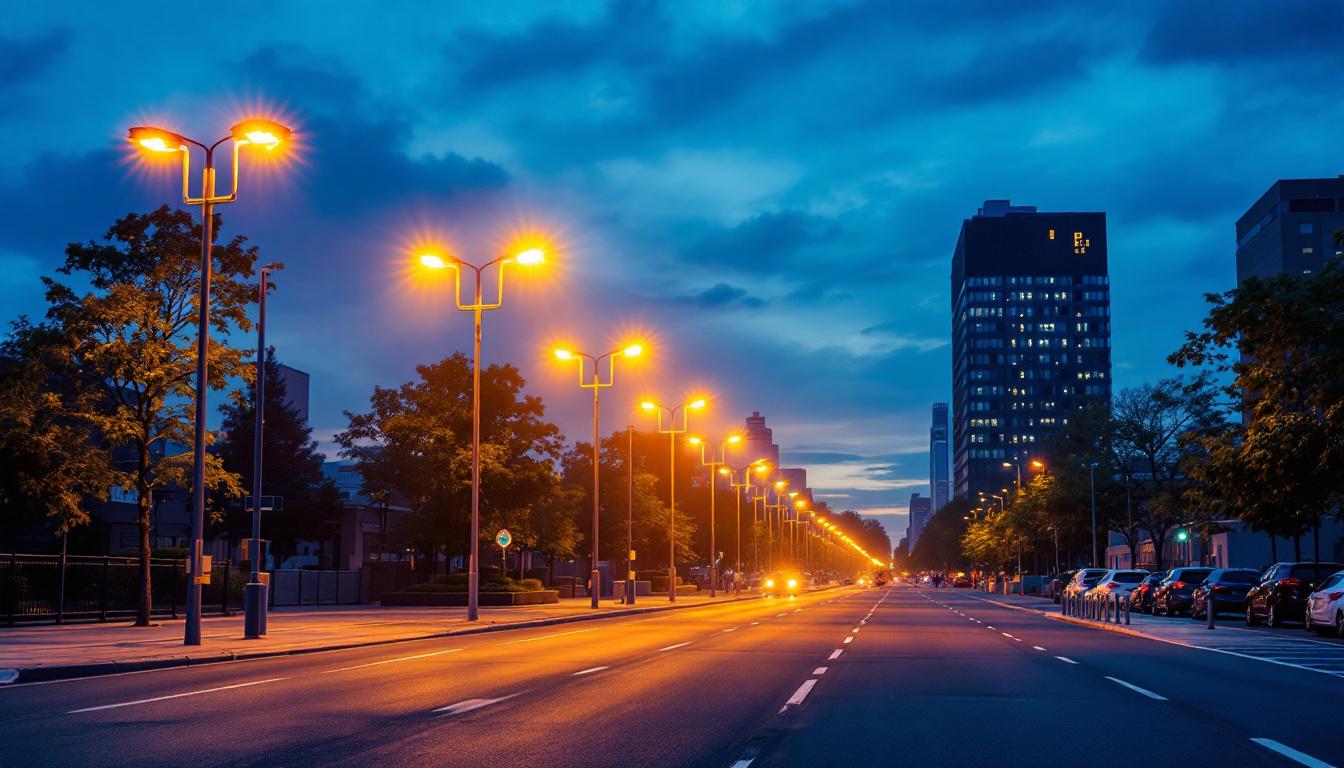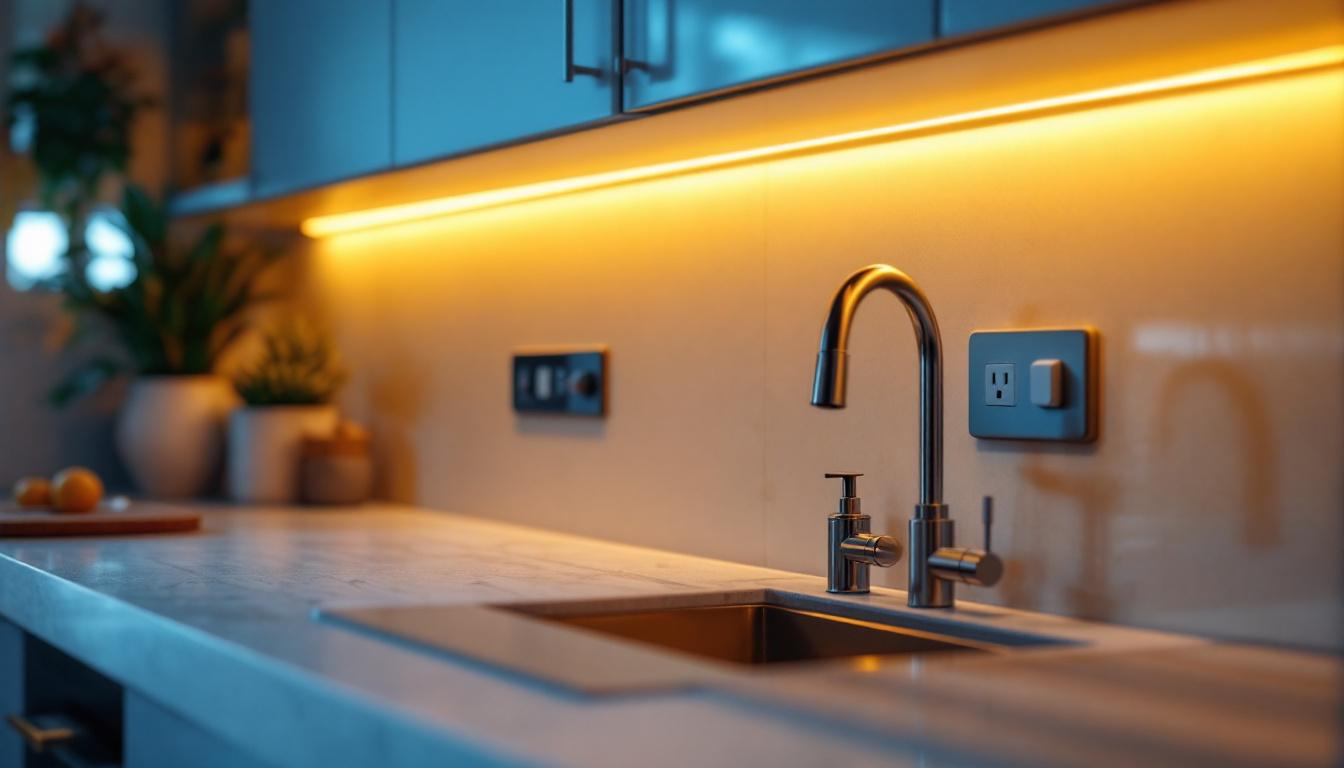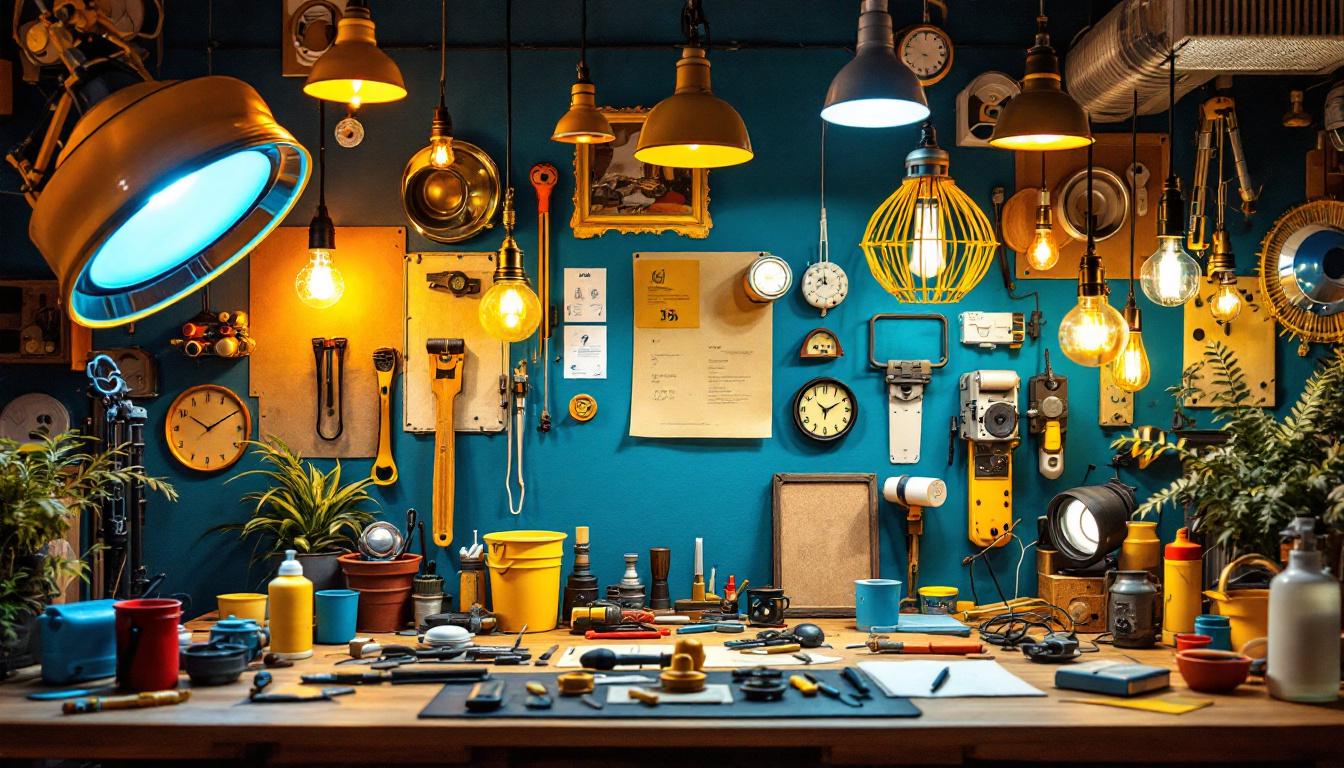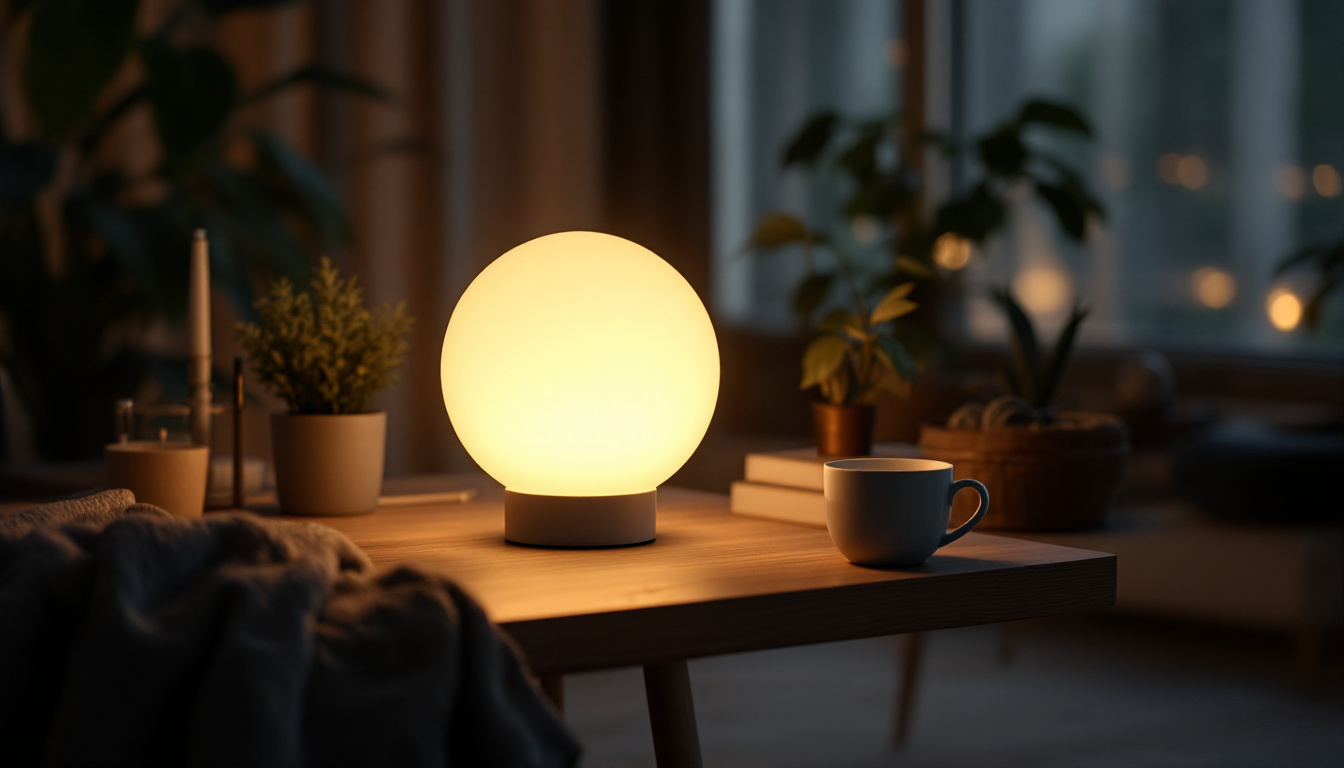
The evolution of lighting technology has significantly transformed the way spaces are illuminated, enhancing both functionality and aesthetics. Among the various innovations in this field, fluorescent light bulbs have emerged as a pivotal development. Their invention has not only revolutionized the lighting industry but also contributed to energy efficiency and environmental sustainability. This article delves into the history, advantages, and growing importance of fluorescent light bulbs in the contemporary lighting landscape.
The journey of fluorescent lighting began with the quest for more efficient electric light sources. Traditional incandescent bulbs, while widely used, were limited by their energy consumption and short lifespan. As the demand for better lighting solutions grew, inventors and scientists began exploring alternative technologies.
Fluorescent lighting emerged as a viable alternative, utilizing a different mechanism to produce light. Instead of heating a filament, fluorescent bulbs use a gas-filled tube and a phosphor coating to create illumination. This marked a significant shift in lighting technology, paving the way for advancements that would follow. The first practical fluorescent lamp was developed in the 1930s, but it wasn’t until World War II that the technology saw widespread adoption due to the need for efficient lighting in factories and military installations. This period catalyzed the evolution of lighting design, as the advantages of fluorescent lighting became increasingly apparent in terms of energy efficiency and brightness.
Over time, several key innovations have enhanced the efficiency and effectiveness of fluorescent lighting. The introduction of electronic ballasts, for example, improved the performance of fluorescent bulbs by providing a more stable electrical supply. This advancement not only increased the lifespan of the bulbs but also reduced flickering and noise, making them more suitable for various applications. The transition from magnetic to electronic ballasts was a game-changer, allowing for more compact designs and enabling the use of fluorescent lighting in a wider range of environments, from homes to large commercial spaces.
Additionally, the development of compact fluorescent lamps (CFLs) brought the benefits of fluorescent technology to smaller fixtures. These bulbs quickly gained popularity in residential and commercial settings, offering energy savings without sacrificing light quality. As awareness of environmental issues grew, CFLs became a preferred choice for eco-conscious consumers, as they consume significantly less energy than traditional incandescent bulbs and have a longer lifespan. Moreover, advancements in color rendering and light quality have led to the creation of warm white and daylight options, making CFLs versatile for various lighting needs. The ongoing evolution of fluorescent technology continues to inspire innovations, such as LED alternatives, which promise even greater efficiency and sustainability in the future.
One of the most compelling advantages of fluorescent light bulbs is their energy efficiency. Compared to incandescent bulbs, fluorescent lights consume significantly less electricity to produce the same amount of light. This reduction in energy usage translates to lower utility bills for consumers and businesses alike.
Moreover, the increased efficiency of fluorescent bulbs contributes to a decrease in greenhouse gas emissions. As more individuals and organizations adopt fluorescent lighting, the overall impact on the environment becomes increasingly positive. In fact, studies have shown that switching from incandescent to fluorescent lighting can reduce energy consumption by up to 75%, which is a substantial contribution to energy conservation efforts. This shift not only benefits the planet but also encourages a more sustainable approach to energy use in homes and workplaces.
Fluorescent light bulbs are designed to last longer than traditional incandescent bulbs. While an incandescent bulb may last around 1,000 hours, fluorescent bulbs can last up to 10,000 hours or more, depending on the specific type and usage conditions. This extended lifespan reduces the frequency of replacements, ultimately saving money on both bulb purchases and maintenance costs.
In addition to their longevity, fluorescent bulbs are often more cost-effective in the long run. Although the initial purchase price may be higher than that of incandescent bulbs, the savings on energy bills and replacement costs make fluorescent lighting a wise investment. Furthermore, many fluorescent bulbs are now designed to be dimmable and compatible with various lighting controls, enhancing their versatility in different settings. This adaptability allows users to create customized lighting environments that can further optimize energy use and enhance comfort, making fluorescent lights not just a practical choice, but also a stylish one for modern interiors.
Fluorescent light bulbs have become a staple in commercial lighting applications. Their ability to provide bright, even illumination makes them ideal for offices, retail spaces, and industrial environments. As businesses increasingly prioritize energy efficiency and sustainability, the transition to fluorescent lighting has gained momentum.
In many cases, government regulations and incentives have further encouraged the adoption of fluorescent technology in commercial settings. These initiatives aim to reduce energy consumption and promote environmentally friendly practices, making fluorescent lighting an attractive option for businesses looking to comply with regulations while enhancing their bottom line.
Moreover, the integration of smart technology with fluorescent lighting systems has opened new avenues for energy management in commercial spaces. Businesses can now utilize sensors and automated controls to adjust lighting levels based on occupancy and natural light availability, further optimizing energy use. This not only contributes to cost savings but also enhances the overall working environment, creating a more comfortable and productive space for employees.
Additionally, the durability and longevity of fluorescent bulbs mean that businesses can benefit from reduced maintenance costs. With a lifespan that often exceeds that of traditional incandescent bulbs, companies can enjoy extended periods without the need for replacements, allowing them to allocate resources to other critical areas of their operations.
The influence of fluorescent lighting extends beyond commercial applications; it has also made significant inroads into residential lighting. Homeowners are increasingly recognizing the benefits of fluorescent bulbs, particularly in areas where energy efficiency is a priority. Kitchens, bathrooms, and garages are common spaces where fluorescent lighting can provide bright, effective illumination.
In addition, the introduction of decorative fluorescent options has made it easier for homeowners to incorporate energy-efficient lighting into their design schemes. With various styles and color temperatures available, fluorescent bulbs can now complement a wide range of interior aesthetics.
Furthermore, the shift towards compact fluorescent lamps (CFLs) has revolutionized how homeowners approach lighting in their living spaces. These smaller, more versatile bulbs can fit into a variety of fixtures, from table lamps to recessed lighting, providing flexibility in design without sacrificing efficiency. Homeowners can now enjoy the benefits of energy savings while also achieving the desired ambiance in their homes.
As awareness of environmental issues grows, many homeowners are also seeking to reduce their carbon footprint. The transition to fluorescent lighting is seen as a crucial step in this journey, as these bulbs consume significantly less energy than their incandescent counterparts. This not only results in lower electricity bills but also contributes to a more sustainable lifestyle, aligning with the values of eco-conscious consumers.
Despite their many advantages, fluorescent light bulbs are not without challenges. One of the primary concerns is the presence of mercury in fluorescent tubes. While the amount of mercury is minimal, it poses environmental risks if the bulbs are not disposed of properly. This has led to increased awareness about recycling and safe disposal practices among consumers and contractors.
Efforts are underway to develop more environmentally friendly alternatives, such as LED lighting, which does not contain hazardous materials. However, the transition to LED technology is still ongoing, and fluorescent lighting remains a viable option for many applications.
Another consideration when using fluorescent light bulbs is their performance in varying temperature conditions. Fluorescent bulbs can be sensitive to extreme temperatures, which may affect their brightness and efficiency. In colder environments, for instance, fluorescent lights may take longer to warm up, resulting in reduced light output.
Lighting contractors must be aware of these limitations when recommending fluorescent bulbs for specific applications. Understanding the unique needs of each space can help ensure that the right lighting solution is chosen, maximizing both performance and energy efficiency.
The future of fluorescent lighting is likely to be shaped by ongoing technological advancements. Innovations in bulb design, such as improved phosphor coatings and electronic ballasts, are expected to enhance efficiency and light quality even further. As researchers continue to explore new materials and technologies, the potential for fluorescent lighting to evolve remains promising.
Additionally, the integration of smart technology into lighting systems is gaining traction. Smart fluorescent lights, which can be controlled remotely and programmed for specific settings, offer convenience and energy savings. This trend aligns with the growing demand for smart home and building solutions, positioning fluorescent lighting as a relevant player in the future of the lighting industry.
While LED lighting is often touted as the next generation of energy-efficient lighting, fluorescent bulbs still hold a significant place in the market. The integration of fluorescent and LED technologies may provide a balanced approach to lighting solutions. For example, hybrid systems that utilize both types of bulbs can optimize energy efficiency while maintaining the desired aesthetic and functional qualities of a space.
As the lighting industry continues to evolve, collaboration between fluorescent and LED technologies may lead to innovative solutions that meet the diverse needs of consumers and businesses alike.
The invention of fluorescent light bulbs marked a significant milestone in the lighting industry, offering a more energy-efficient and cost-effective alternative to traditional incandescent lighting. Their growing importance in both commercial and residential applications underscores their relevance in today’s energy-conscious world.
While challenges such as environmental concerns and performance limitations exist, ongoing advancements in technology and a focus on sustainability are likely to shape the future of fluorescent lighting. As the industry continues to evolve, lighting contractors play a crucial role in guiding consumers toward the most effective and efficient lighting solutions, ensuring that fluorescent bulbs remain an integral part of the lighting landscape for years to come.
Ready to embrace the future of lighting with the energy-efficient solutions discussed in this article? At LumenWholesale, we’re committed to providing lighting contractors with the highest quality fluorescent light bulbs and cutting-edge lighting products. Our spec-grade selection is available at unbeatable wholesale prices, ensuring you get the best value for your projects. Say goodbye to inflated markups and hello to hassle-free bulk buying with free shipping. Elevate your lighting game and experience the perfect blend of quality, affordability, and convenience. Take the next step towards superior lighting by visiting Wholesale Lighting at the Best Value today.

Discover the essential insights every lighting contractor needs about commercial LED street lights.

Discover the essentials of under cabinet lighting with outlets in this comprehensive guide for lighting contractors.

Discover top Color Factory discount codes for lighting contractors, saving up to 20% on quality lighting solutions.

Discover essential tips for using Baselite Lighting Opal Ball fixtures effectively in your projects.